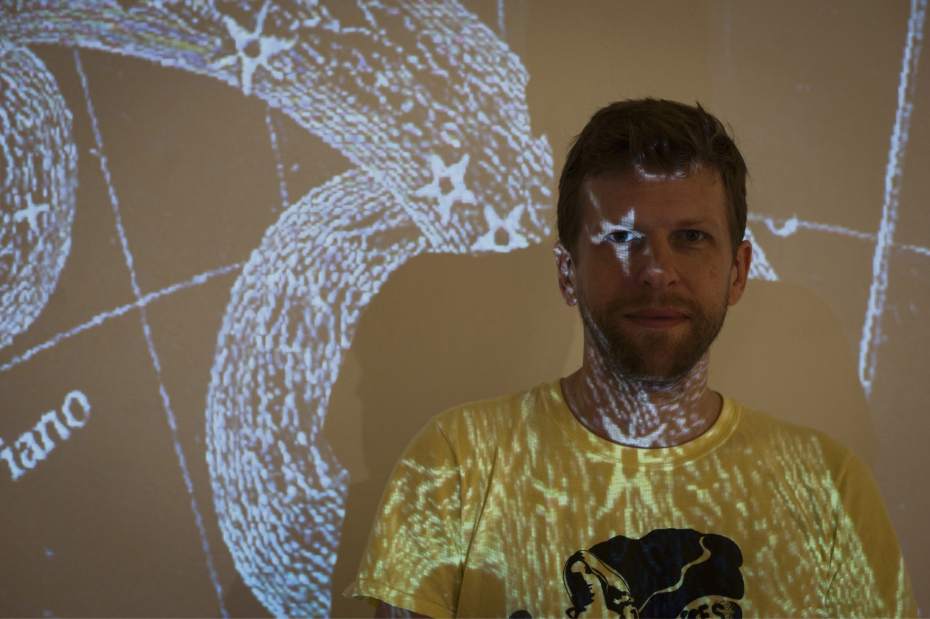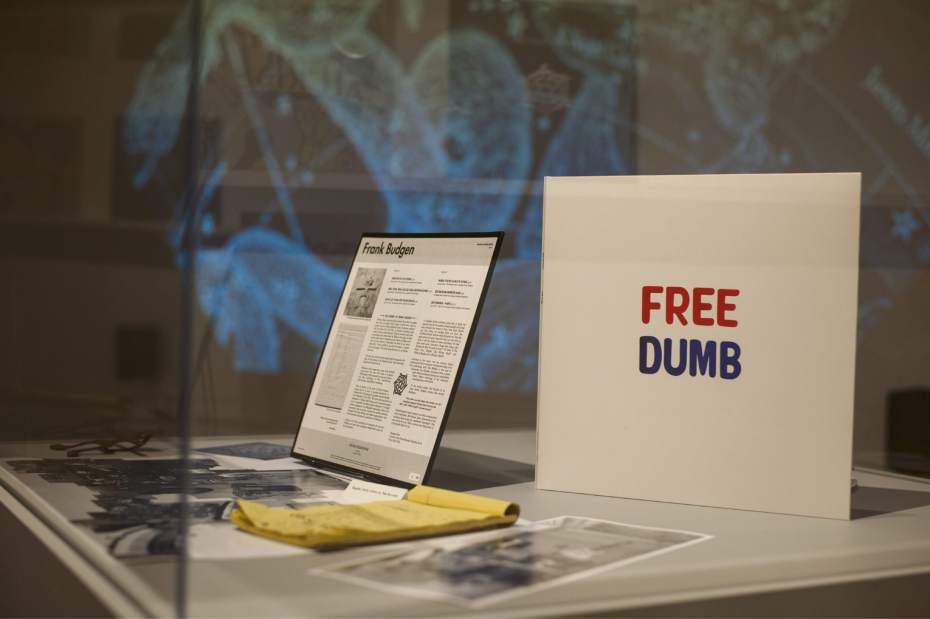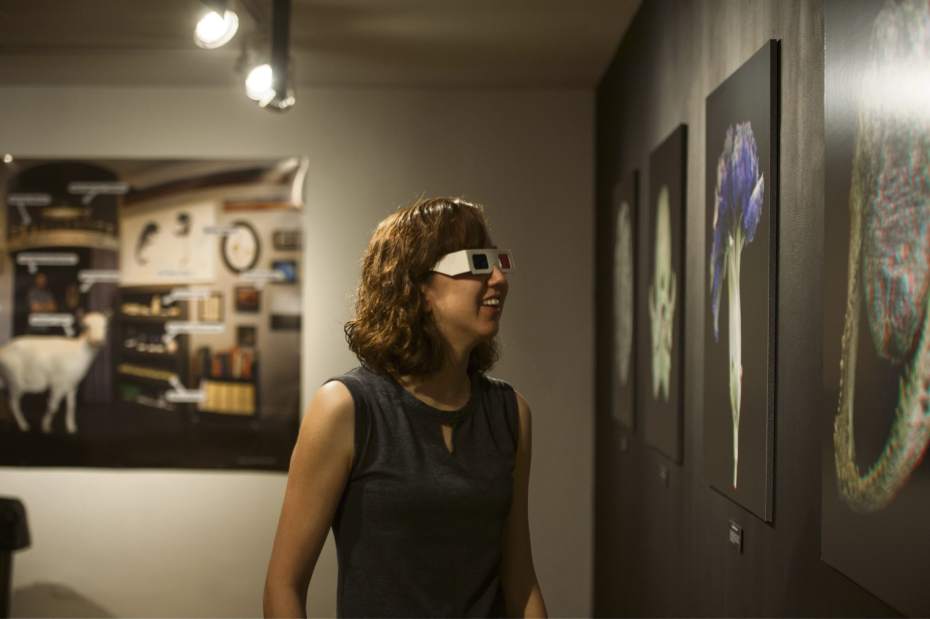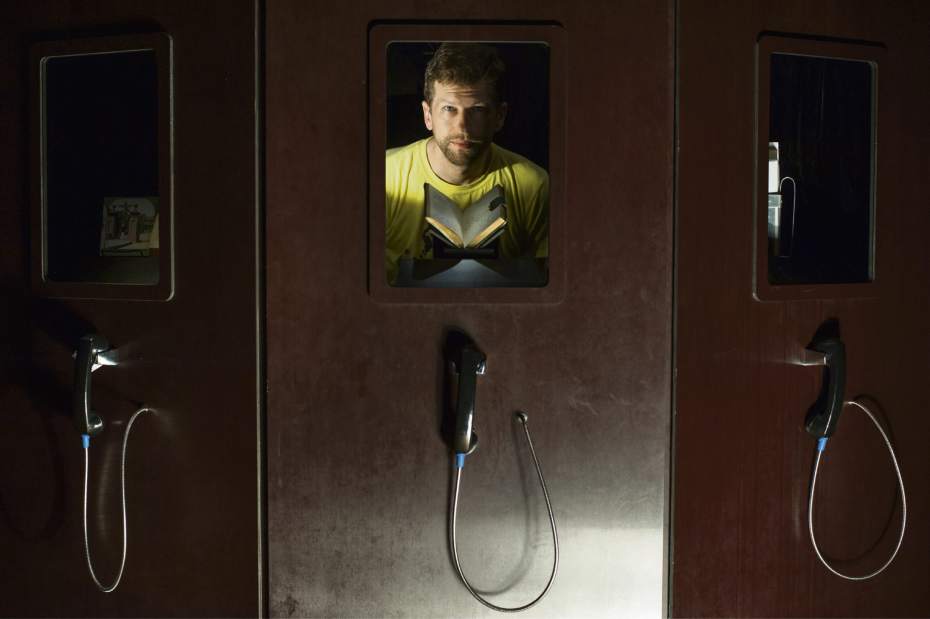Science takes center stage at Shadyside art exhibit
Possessing the mind of a mad scientist, Richard Pell seems an unlikely candidate for the Pittsburgh Center for the Arts' 2016 Artist of the Year award.
Yet there he was on the evening of Aug. 19 at the opening reception of the latest round of exhibitions at the center, giving visitors impromptu tours of “Pell's Cabinet of Ambiguities” — a literal cabinet of curiosities that, since 2014, has traveled from Berlin to Barcelona and back again.
“This hearkens back to the early days of museums, when there were these kind of cabinets of curiosity that contained things that were collected, broadly speaking, not of any one category,” he explained to a visitor.
“Pell's Cabinet of Ambiguities” is a major part of Pell's Artist of the Year exhibit, which he has titled “The Myth of the Great Outright Extraordinary!”
Like a sideshow barker of yesteryear, Pell is fond of such frilled turns of phrase. If you've had the opportunity to “step right up” to his Center for PostNatural History ( postnatural.org/ ) on Penn Avenue in Garfield, you already know about this wunderkind and his wunderkabinett filled with evidence of all sorts of odd historical human anomalies, as well as genetic mutations of animals in the form of literal and photographic evidence, short films and taxidermy dioramas.
There, you can pick up an old-school telephone receiver and learn all about BioSteel™ Goats, which have been genetically modified to produce the protein from Golden Orb Weaver Spider (Nephila clavipes) silk in their milk. The project was backed by the U.S. Department of Defense for use in bulletproof protection.
“Pell's Cabinet of Ambiguities” is an abridged version of his collectibles. The baker's dozen on display here include everything from Sea Monkeys to the Lord's Prayer written on a roundel of paper the size of a nickel.
“It was written by Martha Honeywell (1787–1848) approximately 200 years ago,” Pell is quick to point out. “What's notable, in addition to the fact that the work itself is extraordinary, was that Martha Honeywell had no arms. She created these works with only her mouth. She had one foot with three toes.”
Pell, who teaches electronic media art at Carnegie Mellon University, says he backed into the idea of creating a museum as an “expressive form” while working as one of the founding members of the highly acclaimed art and engineering collective at CMU known as the Institute for Applied Autonomy.
His work with IAA included several robotic, web and biologically based projects that called into question the imperatives that drive technological development. They included projects such as the GraffitiWriter, a graffiti-writing robot, and TXTmob, a predecessor to Twitter that let users share mobile phone SMS text messages.
“I became interested in genetic engineering kind of through that lens, building provocative technologies,” Pell says. “One of the things I noticed right away was that I wanted to visit a museum that wrapped my head around what all this stuff meant, and that place did not exist.”
So, Pell started contacting researchers of things he read about in the news, such as the BioSteel™ Goats, and began building his museum, which to date is the world's only museum dedicated to living organisms that have been intentionally bred or engineered by humans.
But evidence of Pell's penchant for the strange and unusual exists even before that. To that end, the exhibit also includes a “Don't Call Me Crazy on the 4th of July,” a documentary Pell created about the life of Bob Lansberry (1930-99) a Pittsburgh street protestor, philosopher, consumer advocate and mind-control activist most famous for his signs and fliers proclaiming messages such as “Why Can't Lansberry Get Mail?” and “Are You Mind Controlled?,” which became icons of Downtown Pittsburgh life in the last three decades of the 20th century.
The film won Pell the Best Michigan Director Award at the Ann Arbor Film Festival in 2005, and took first prize at the Iowa International Documentary Film Festival that same year.
There's also several larger-than-life 3-D photographs of things such as a mutant mosquito and the scull of a pug dog and recordings from Pell's own fledgling vinyl record label called Specific Recordings thrown in for good measure, which is enough to pique anyone's curiosity.
Kurt Shaw is the Tribune-Review art critic.
Emerging Artist
Also on display at Pittsburgh Center for the Arts is “Dressed with D.R.E.S.S.” an exhibition of recent work by the 2016 Emerging Artist of the Year, Sarika Goulatia.
Inspired by a near-death experience, the exhibit includes several site-specific installations that are a response to the artist's personal mental progression through a life-threatening severe immune response.
“I was on extremely high doses of steroids due to an acute near-death allergic reaction to sulfasalazine – a sulfa drug,” Goulatia explains. “I was diagnosed with D.R.E.S.S., a medical acronym that stands for Drug Reaction with Eosinophilia and Systemic Symptoms.”
Made of myriad combinations of nails and pins, Goulatia's installations will leave you feeling like you are on pins and needles yourself.
— Kurt Shaw






